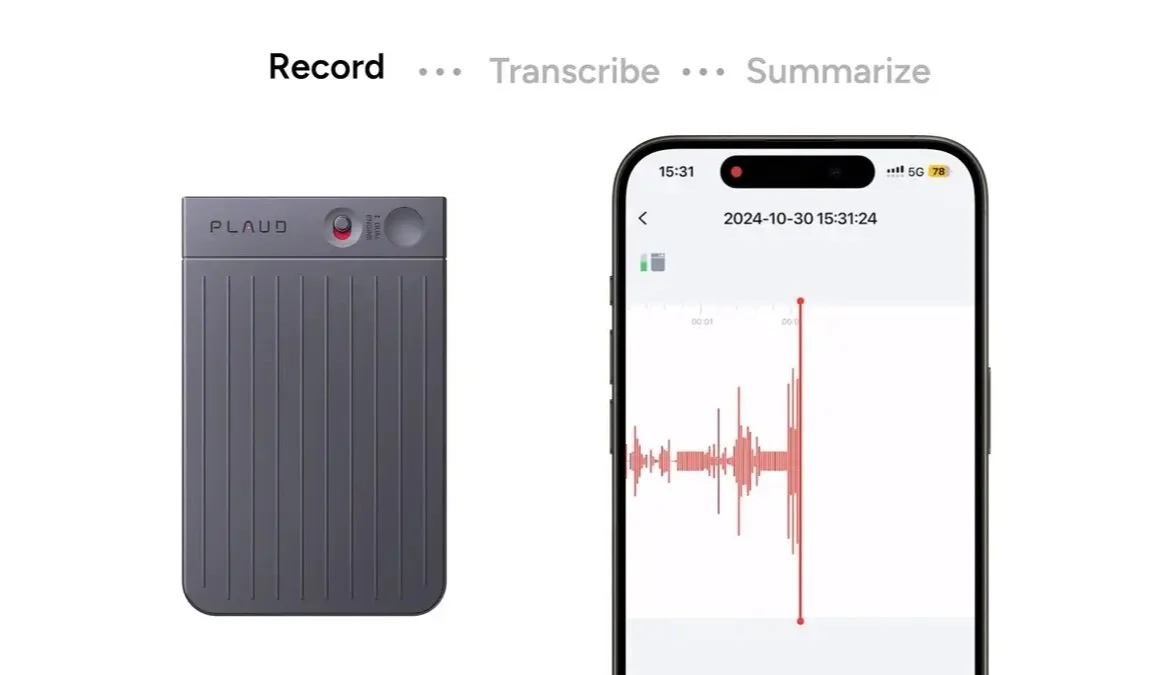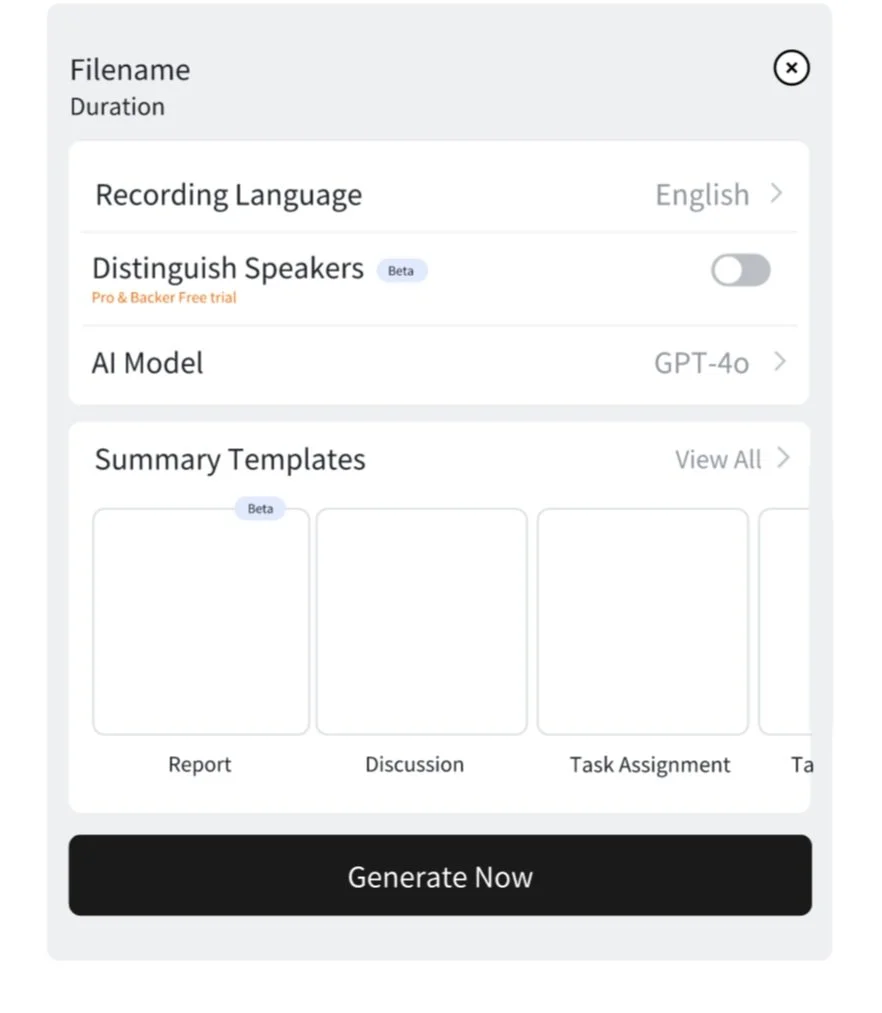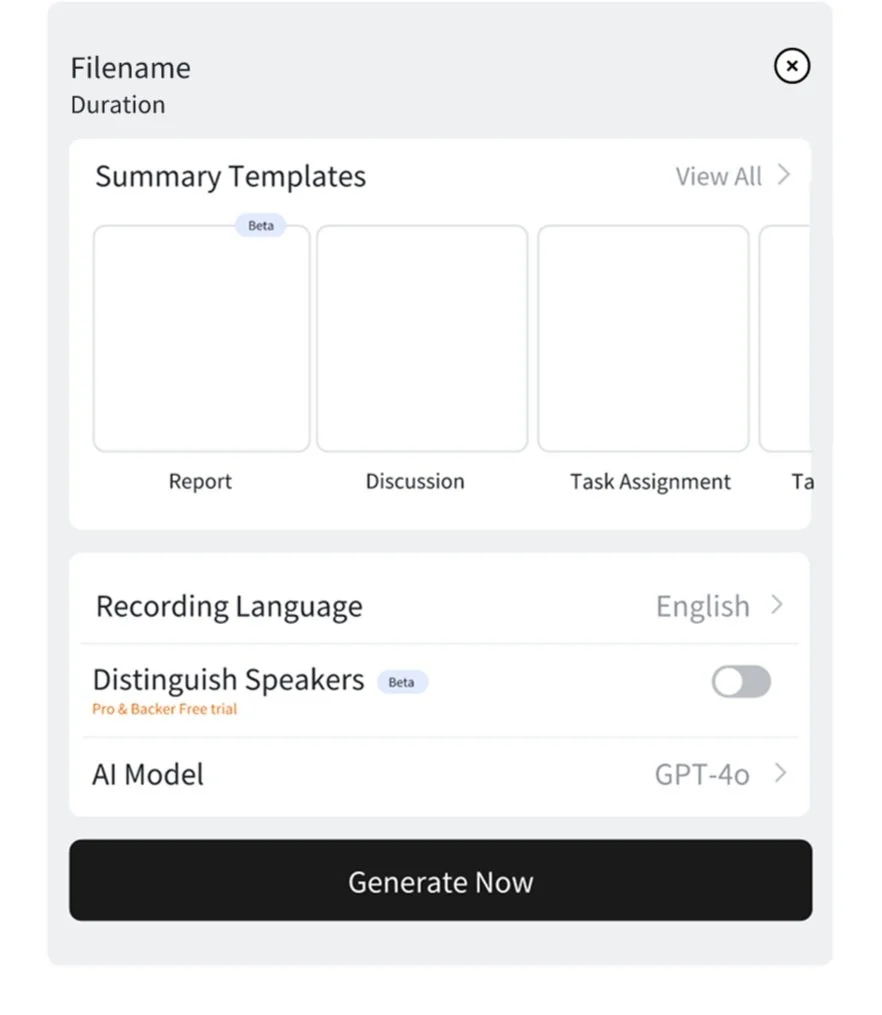PLAUD.AI
Overview
PLAUD.AI is an AI-native hardware and software company that transforms real-world conversations into actionable insights.
During my internship, I led user research and contributed to the development of key web and app features for PLAUD’s platform. My work focused on two initiatives: improving the template selection flow and launching a flexible meeting summary template to enhance the overall summarization experience.
Impact
91.67%
Autopilot Template User Satisfaction Rate
(9% above average)
1
Role
Product Design & Management Intern
50.68%
2
Autopilot Template
Summary Sharing Rate
Team
PLAUD.AI Product Team
(Product Lead, Product Manager, UX Researcher,
2 UX Designers)
PLAUD.AI Marketing Team
Duration
May - August, 2024
(10 weeks)
Tools
~30%
Increase in Template Selection Flow
User Satisfaction Rate
~50%
Reduction in
Selection Steps
The Problem
User feedback revealed two recurring pain points:
Current templates failed to support varied meeting formats.
The template selection process was inefficient and frustrating for users.
Thus, the team decided on two opportunities:
How might we support users who run different types of meetings beyond what existing templates cover?
How might we reduce the cognitive load users face when selecting a template that fits their recording?
Figma
FigJam
Notion
Feishu
GPT-4o
The Solutions
1
Autopilot System:
Automating Template Matching
An intelligent system that automatically categorizes recordings and selects the most appropriate template. When no match is found, it defaults to a new, flexible meeting summary template I designed to handle edge cases.
2
Manual Template Selection
Flow Upgrade
A reworked selection experience that reduces decision fatigue by streamlining the flow and improving the clarity of template options through redesigned thumbnails.
PLAUD Web Version
PLAUD App Version
*High-fidelity prototypes are created in collaboration with a UX designer.
Design Process
Project 1
Manual Template Selection Flow Upgrade
Context
At the start of the project, the PM identified 2 usability issues in the existing template selection flow:
Users were required to complete 2 separate selection steps before generating a summary, creating unnecessary friction.
The interface lacked visual cues to help users distinguish between templates within the same category, making it harder to choose the most suitable one.
Specific Goals:
01
- The number of taps before summary generation
Metrics
Step 1: Choose language and distinguish speaker mode
02
+ Clarity and usefulness of template thumbnails
Tap Reduction
Overall Efficiency
A lower tap count to complete the template selection process indicates a smoother, more streamlined interaction aligned with our goal of minimizing friction.
The Original Design
Step 2: Choose the summary template
03
Surface new templates without disrupting user flow
Template Detail Tap Rate
Thumbnail Clarity
A drop in this rate indicated that users were able to make informed decisions without needing to open the full template view.
Optional: Tap the thumbnails of the templates for details
04
Ensure smooth flow for new and returning users
Template Usage Spread
Template Introduction
An increase in the usage of previously underused templates suggests improved discoverability and more informed decision-making.
Analytics & Insights
73%
of the users only use 1 language all the time
The size of the language selection bar can be reduced since multiple choice is not necessary for most users
The remaining space can be used as a shortcut for template selection, so users do not need to select templates on a separate page.
Wireframing
Information Architecture
Now the overall structure has been decided, the primary questions are:
Final Decision: Iteration 1
Why?
Templates are the primary decision in the selection flow.
Speeds up access for users who skip optional parameters.
Reduces cognitive load by surfacing the most relevant action first.
Follows task hierarchy and supports efficient decision-making.
Iteration 2
Content Planning
1. Recording language selection
2. Distinguish Speaker Mode
3. AI Model
(new parameter)
4. Template Selection
(+ entry point to full template menu)
5. Generate button
Iteration 1
How many options should be shown on the shortcut for template selection?
Which templates should be on the shortcut for template selection?




